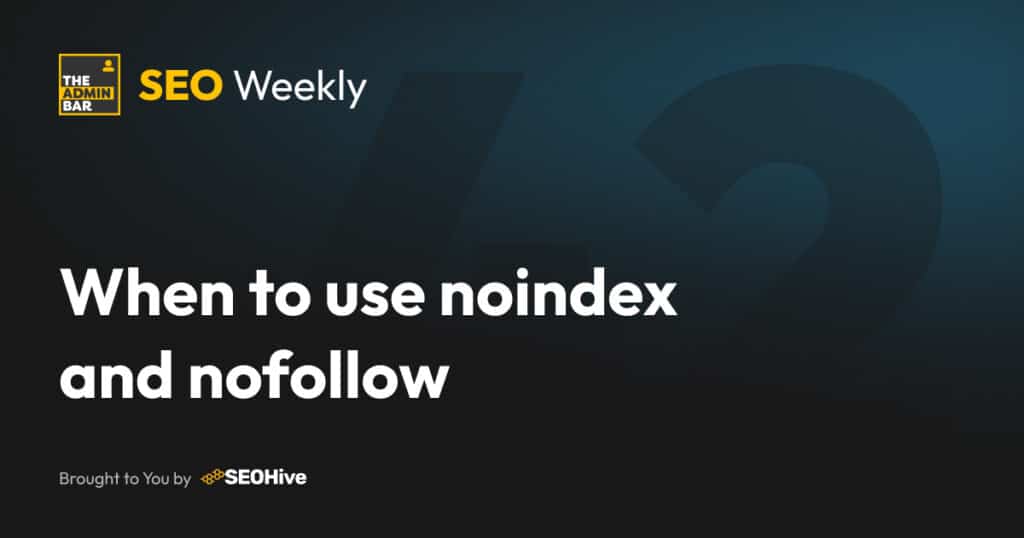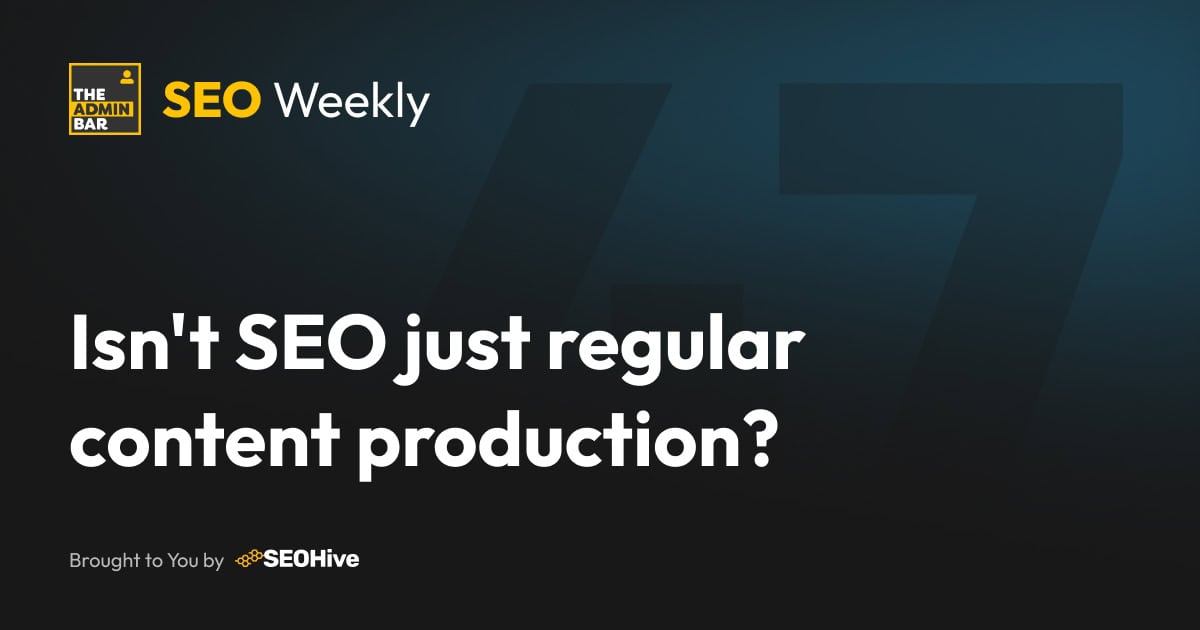This week’s SEO tip is short, sharp, and useful. Two tiny directives – noindex and nofollow – can shape what shows up in Google and where your link equity flows.
They are so easy to get wrong, and can have a massive impact on your sites performance in the SERPs. So what exactly are they, and how exactly should you use them?
The Basics
noindex → tells search engines not to show a page in results (it can still be crawled).
nofollow → tells search engines not to pass link authority through links on that page.
You can apply nofollow either:
- At page level (in meta robots)
- Or on individual links (rel=”nofollow”)
Additional tags:
- rel=”sponsored” → for paid or affiliate links
- rel=”ugc” → for user-generated content like comments or forums
The Default
Most pages should simply be:
index, follow → meaning they can appear in search and share link equity normally.
That’s your healthy default for content you want to rank.
When to use noindex
Use noindex when a page is useful to users, but you don’t want it in search results.
Good examples:
- Cart, checkout, login, or thank-you pages
- Internal search results or thin filters (?s= or tag archives)
- Temporary landing pages, staging sites, or test content
- Duplicate or parameter pages you can’t canonicalise
- Non-HTML files like PDFs you want hidden (via X-Robots-Tag: noindex)
👉 Pro tip: most of the time you’ll pair this with follow…
noindex, follow → That way, bots don’t index the page but still crawl its internal links.
When you should not to use noindex
- On pages you actually want to rank – fix or improve them instead
- On paginated loop pages (it can orphan deeper content)
- When a redirect or canonical would be cleaner
When to use nofollow
Use nofollow (or its smarter cousins) when you don’t fully trust a link or it’s paid:
- Unmoderated comments → rel=”ugc”
- Paid/affiliate links → rel=”sponsored”
- User profile links or forums → rel=”ugc”
- Third-party widgets or embeds → rel=”nofollow”
❌ Don’t use internal nofollow to try and control PageRank – it usually causes more harm than good. If the page itself shouldn’t rank, use noindex, follow instead.
When to combine noindex AND nofollow
It’s rare, but sometimes both are appropriate…
Use noindex, nofollow only for short-term or low-quality pages – like temporary tests, staging areas, or junk URLs you plan to delete. Leaving this combo on live templates long term will block link flow and break discovery, so treat it as a short-term measure only.
Common Mistakes
There are a few easy traps that can undo your good intentions:
- robots.txt + noindex → Don’t use both. If crawl is disallowed, Google never sees your noindex tag.
- canonical + noindex → Sends mixed signals. Pick one: canonical for duplicates, noindex for removals.
- nofollow for deindexing → Doesn’t work. It’s about link trust, not visibility.
A quick review of your templates and meta tags can catch these before they quietly block important pages.
Housekeeping
Keep things clean and consistent:
- Don’t list noindexed URLs in your XML sitemap – it confuses search engines.
- Use the URL Inspection Tool to confirm “Excluded by ‘noindex’ tag.”
- Expect a lag before changes take effect – sometimes days, sometimes weeks.
- For urgent removals: use Google’s temporary removal tool or return a 404/410.
Side note: If you need to remove a page from search results quickly, serving a 404 or 410 response will usually get it dropped faster than a 301 redirect. Just remember this also discards any link equity, so it’s a short-term fix — use it sparingly and only when you really need the page gone.
To recap…
- noindex → keeps pages out of search
- nofollow → controls link trust
- robots.txt → controls crawling
- index, follow → your normal default
Keep what matters in Google…
Keep what doesn’t out…
…And always let your link equity flow where it helps most.
What about you – have you ever accidentally noindexed something important? (We’ve all done it at least once! )
Join the Conversation!
There's a dedicated thread on this post inside of The Admin Bar community. Join in on the conversation, ask questions, and learn more!
Group Thread





